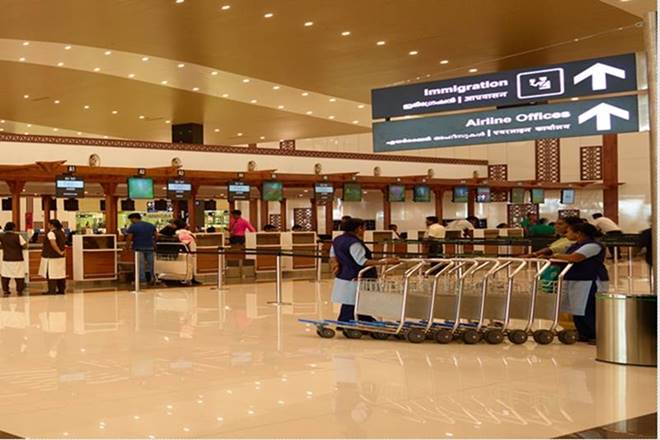A problematic homecoming: Malayalee exodus from the Gulf

According to data published by the Non-Resident Keralites Affairs department, around 870,000 expats from Kerala came back to India in 2020
Around 870,000 expats from Kerala came back to their homeland in 2020, according to data published by the Non-Resident Keralites Affairs (NORKA) department, with 567,000 citing job loss as the reason for their unwitting homecoming. A large majority of the jobs lost were blamed on the Covid19 pandemic, that has caused bloodbaths in job markets around the world.
While Covid-19 has led to a tsunami of job losses, for the migrants, the tide had already begun turning a few years earlier, mainly due to the relatively low crude oil prices and the resultant depressed economies in the Gulf nations.
The Gulf-Kerala migration corridor dates back to fourth century BC when Arab traders used to follow the east to west route of the Monsoon winds in their dhows (boats). The extensive Malabar coast attracted Arab seafarers to the region’s pepper and other spices, who then sold them across the world.
The Kerala-Gulf relation also prospered in the latter half of the 20th century, following widespread discoveries of oil in several Gulf countries. For decades, the Gulf remained the preferred destination for Keralites. Over the years, these workers made significant contribution to Kerala’s economy in the form of remittances. According to the Reserve Bank of India, in 2019 Kerala was at the forefront of remittances at USD 13.11 billion against the country’s overall USD 69 billion. While the remittances are important for India, in Kerala they are primordial as they account for around 36 pc of Kerala’s state GDP.
Pillar of Kerala’s economy
Economists say that remittances push economic growth in the recipient countries through their appreciating impact on income, savings and expenditures. By the 1990s, remittance had emerged as the greatest macroeconomic variable in Kerala’s economy as it remains untaxed. “Construction was the most prominent sector that absorbed a greater part of the migrating population. Healthcare and education (of migrants’ children) are also one of them. Menial labour and domestic help also saw a growth in Malayalee population,” Christy Tharaniyil, a public policy expert, from Kerala tells Media India Group.
But the problem arises when an economy depends too heavily on foreign financial flows. Greater the reliance on inflow of remittances, greater the dependency on the stability of the global economy. Affected by the pandemic and a downturn in oil prices, Kerala saw a 20 pc dip in remittances.
The two Gulf Wars and the Global Financial Crisis in 2009 did not have a significant impact on the flow of remittances. But the rate of growth in remittances has seen a downward trend since 2012 owing to various geo-political factors and a 5 pc decline in emigration from Kerala since 2013. The crash in oil prices has led to massive austerity drives across the GCC. To nurse the rising fiscal deficit, the GCC countries have opted for cost-cutting measures such as halting construction business, widespread salary cuts and mass lay-offs of foreign workers, including the large South Asian migrant pool.
Saudi Arabia has already increased taxes and import duties to compensate for the fall in oil prices, hurting the migrant workers. “A majority of the workers were employed on a contractual basis in the informal sector, who were the first to be laid off. However, Indian expats working in the healthcare sector in the Gulf were not laid off due to the challenges posed by the increasing cases in view of the pandemic,” adds Tharaniyil.
The fall in remittances has added to the fiscal stress on Kerala as majority of migrants have either lost their jobs or suffered pay cuts and as a result they were unable to send money home or had to reduce the amount of remittance. This had a direct impact on the tax revenue of the state as consumption saw a fall at a time when Kerala was trying to recover from the ravaging floods of 2018 and economic mess left behind by the pandemic, which also killed tourism, one of the biggest sectors of the state’s economy.
Returnee migrants as an opportunity
Kerala’s budget for 2021 has been carefully formulated to accommodate the returning migrants. Presenting the budget last week, finance minister TM Thomas Isaac announced creation of 800,000 new jobs in the year to address the woes of the Non-Resident Keralites (NRKs). INR 1 billion have been assigned for various rehabilitation activities of the NRKs while the pension for the expats has been hiked to INR 3,500 and to INR 3,000 for the expats who have returned.
While the budget saw an 18.77 pc decline in revenue income, owing mainly to the drop in remittances, the state aims to extract funds from the Kerala Infrastructure Investment Fund Board (KIIFB) estimated at INR 600 billion. Also, “To ease the distress of these returned expats, the government is in talks to avail their skills and expertise to boost the construction sector in the state,” adds Tharaniyil. While that may ameliorate the suffering of some of the returnees, the state and the country needs to develop broader nets to help the expat workers who have been forced to return home, to keep them afloat till the next assignment takes them back overseas.









